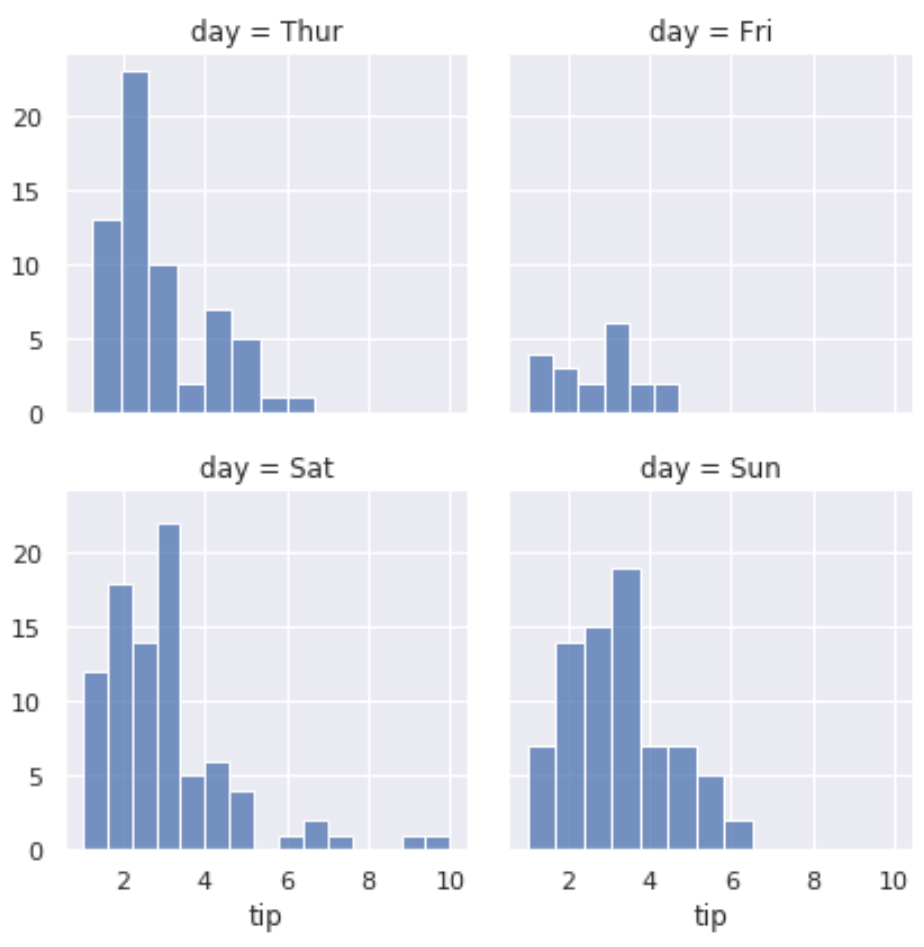You can use the FacetGrid() function to create multiple Seaborn plots in one figure:
#define grid g = sns.FacetGrid(data=df, col='variable1', col_wrap=2) #add plots to grid g.map(sns.scatterplot, 'variable2', 'variable3')
Note that the col argument specifies the variable to group by and the col_wrap argument specifies the number of plots to display per row.
The following examples show how to use this function in practice with the built-in ‘tips’ dataset:
#load tips dataset
tips = sns.load_dataset('tips')
#view first five rows of tips dataset
tips.head()
total_bill tip sex smoker day time size
0 16.99 1.01 Female No Sun Dinner 2
1 10.34 1.66 Male No Sun Dinner 3
2 21.01 3.50 Male No Sun Dinner 3
3 23.68 3.31 Male No Sun Dinner 2
4 24.59 3.61 Female No Sun Dinner 4
Example 1: Create Multiple Plots
The following code shows how to create multiple Seaborn plots in one figure:
#define grid with two plots per row
g = sns.FacetGrid(data=tips, col='day', col_wrap=2)
#add histograms to each plot
g.map(sns.histplot, 'tip')

Here’s what we did with this simple code:
- Specified to group by the variable ‘day’
- Specified to display 2 plots per row
- Specified to display a histogram in each plot that shows the distribution of ‘tip’ values for each particular day
Example 2: Create Multiple Plots with Specific Height
The following code shows how to create multiple Seaborn plots with a specific height and aspect ratio:
#define grid
g = sns.FacetGrid(data=tips, col='day', col_wrap=2, height=4, aspect=.75)
#add histograms to each plot
g.map(sns.histplot, 'tip')

Example 3: Create Multiple Plots with Legend
The following code shows how to create multiple Seaborn plots and add a legend:
#define grid
g = sns.FacetGrid(data=tips, col='day', hue='sex', col_wrap=2)
#add density plots to each plot
g.map(sns.kdeplot, 'tip')
#add legend
g.add_legend()

Additional Resources
How to Add a Title to Seaborn Plots
How to Change the Position of a Legend in Seaborn
How to Adjust the Figure Size of a Seaborn Plot